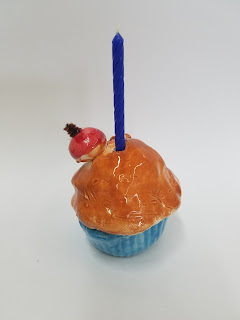2 Class Periods
 |
| Little Red Snow Bird, Kindergarten Art Lesson |
Day 1:
On the first day of this lesson we prepped our paper to make it look like sky. We started by picking out a piece of 12 x 18 inch construction paper. Students were given choices of various blues and some gray hues. Once a color was selected each child wrote their name on the back of their paper. This may seem like a common sense step, but definitely worth mentioning especially if you are working with kindergarten students.
Using a pencil, we planned out where our little bird would be sitting on the branch. I allowed students to use two circle templates for help (a poker chip and a Pringles lid make great circle templates). Students drew a little triangle shape near the bottom of the larger circle to represent the tail of the bird.
Next each student was given a piece of chalk pastel in a blue or purple hue. I demonstrated how to rub the pastel using the side of it versus the tip. We then took a tissue to smear the color from the top to the bottom of the paper. Students then washed and dried their hands.
Once returning to the table we took a brown oil pastel to create the tree branch. My students have worked with both chalk and oil pastels before, but if you have a class with very little experience in these mediums you may want to give them a basic lesson on the difference between the two products.
The most important thing when making the tree branch is to make sure that it looks like the bird is sitting on the branch and that the branch is not going through the bird's body.
The final, step for this class period is to make the little bird red. We used red tempera cakes for this step. I demonstrated to students how to create a nice rich opaque color by using more paint and a little less water on when they painted.
Day 2:
During this class, we reviewed the steps from the previous class period before beginning with the next steps.
We discussed how the little bird was looking up into the sky. I demonstrated to students where to place the eyes and the beak (near the top of the head). The eyes were added on with a black sharpie marker and the beak was added on with an orange oil pastel.
Our last step for this lesson was to paint the snow. We used a cotton ball and white liquid tempera to create the snowflakes. When the paint was still wet we added a sprinkle of white glitter to give it a hint of sparkle.
 |
| Student painting snowflakes with a cotton ball. |
Student Examples:


















































